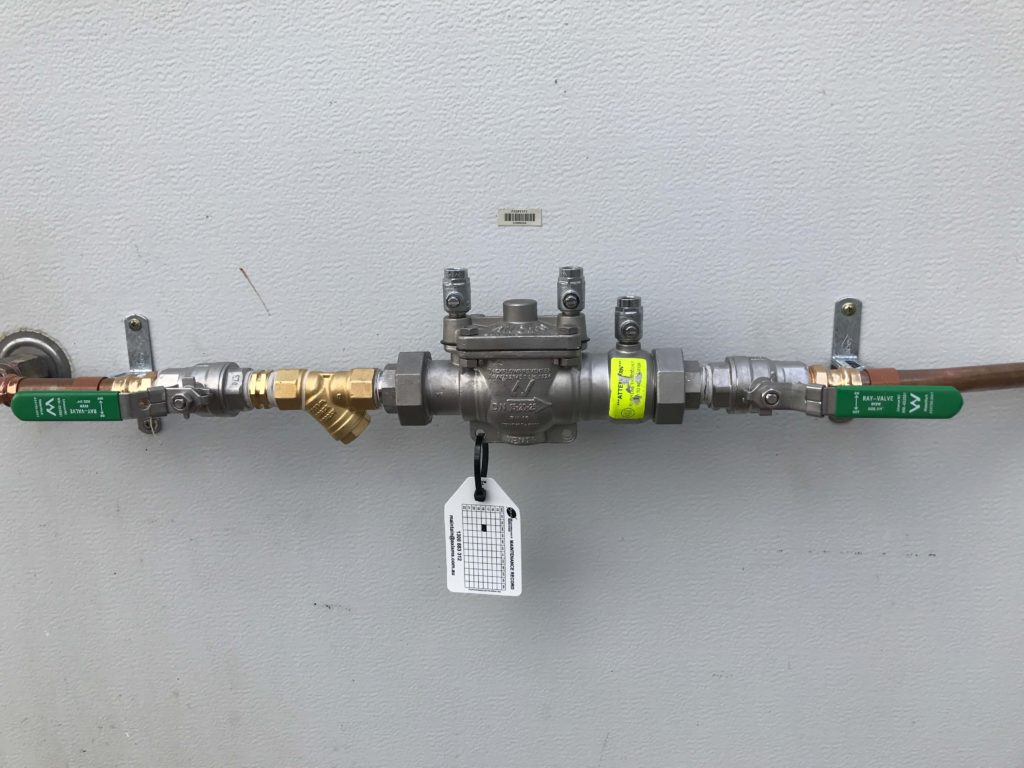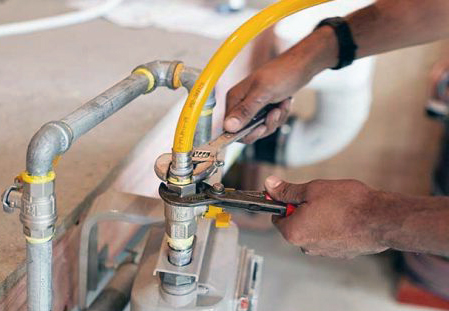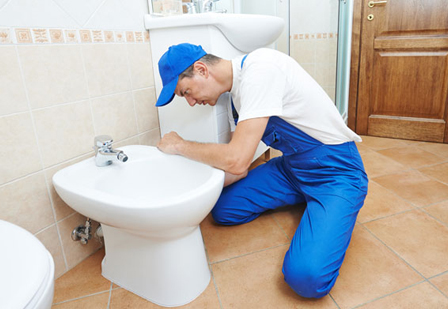Inspection & Maintenance of Backflow Prevention Devices & Air Gaps
Issues with backflow can become a major problem for cities and communities. Maintaining the function of backflow prevention devices is highly important. Backflow prevention devices are designed to drain polluted fluids away from the drinking and living water supply. The following article will give you a clear understanding of what backflow is and how to prevent it.
What is Backflow?
Backflow is the result of contamination being pushed into the main water supply. This could happen in one specific area or property or effect a full community or neighborhood. When fluids or substances affected by contamination enter the water supply, communities are susceptible to drinking water contaminated by sewage, chemical waste, and other foreign substances. Prevention methods help minimise the risk of health issues, water deficit, and other major water supply issues in communities.
Schedule Your Backflow Testing
Outstanding experience
Licensed Experts
Fast and Reliable
How Does Backflow Occur?
Backflow can occur for several reasons. One main reason for backflow is an increase or decrease in water pressure. The water supply flowing into homes and properties flows in under pressure. Backflow can occur if there is an issue with the pressure or the consistency of the water flow, causing water to have a backward flow into the water supply. Backflow can also occur from natural flooding and contamination at construction sites.
Monitoring water pressure is a major key to preventing backflow. Keeping track of a decrease in water pressure can minimize the potential of major hazards caused by backflow. Here are a few ways to identify potential issues with backflow before they occur:
- High water pressure levels on a property with lower water pressure being supplied by the main water provider.
- A water outlet or canal that is elevated above the main water entry.
- Fire prevention tactics which involve pumping water from the main water supply.
- A break, crack, or malfunction in the main water supply.
- Downstream water flow from your property or a neighboring property.
When the water supply makes contact with a polluted or contaminated source, there is a high chance of contamination. Decreases in pressure create an effect that sucks contaminated fluids into the main water supply. The potential for backflow depends on the type of property and the environment of the community.
How to Apply for a Backflow Device Permit?
Property owners, construction workers, government officials, and designers are all responsible for providing the proper testing for backflow prevention. Hiring a plumber or backflow specialist to perform backflow prevention tests is required.
Once you have completed the required backflow prevention testing, you will need to provide proof of testing through the required forms from your city officials. Payment is required when submitting forms for a backflow device permit. Depending on your local council laws, your fees may vary. Refer to your local bylaws for information on fees and submission requirements for a backflow permit.
Potential Sources of Contamination
There are several everyday sources for potential contamination due to backflow. Identifying the source of backflow is key before investing in a backflow prevention device. The following list contains common sources and areas that are prone to backflow contamination occurrences:
- Construction sites
- Fire safety device stations, hose reels, and hydrants
- Large swimming pools (especially underground)
- Spas and vendors using large quantities of water flow
- Home appliances such as dishwashers
- Large scale air conditioning systems and towers
- Areas with high levels of irrigation
- Ponds and flooding of local rivers or water streams
- Washing bays for large or commercial vehicles
- Areas with high levels of chemicals
- Boilers, steamers, and large heating systems
- Contaminated areas and building sites
- Docks and large shipment facilities
Examples of Properties Required to Comply with Backflow Prevention
Property owners and government officials are required to comply with laws of backflow prevention. Identifying the types of properties that are bound to backflow prevention laws will save money on fees and help to prevent issues of backflow on the property.
- Hotels and short term rental institutions
- Apartment units and complexes
- Mechanics and automobile repair shops
- Large shopping centers
- Restaurants
- Medical labs and offices
- Dental offices and surgery facilities
- Parks and recreation centers
- Mobile home and caravan parks
- Laundry and dry cleaning services
- Schools and daycare institutions
- Extermination and pest control areas
- Botanical gardens and greenhouses
- Shop yards, marinas, and boat buildings
- Community zoos and aquariums
- Subway and railway stations
- Large scale construction sites
- Chemical plants and storage facilities
- Agricultural and horticulture venues
- Clubhouses and membership facilities
- Community centres

What is a backflow prevention device?
A drop in water pressure causes water to run back into the main water system of a city or a community. In such cases, the opportunity arises for contamination and pollution in the main water supply. To avoid this from happening, a backflow prevention device is necessary. These devices are necessary to avoid health and contamination issues in a household, a community, or on a large-scale construction site.
A backflow prevention device works by stopping contaminated and toxic fluids from running into the main water supply of Noosa and the surrounding community. By installing one of them, you could save your family or community from a potential backflow of contamination which could cause disease and loss. The device will protect all of the water flow needed for basic living requirements like washing, food preparation, and human consumption.
Homeowners and community members are encouraged to monitor their water supply for signs of contamination like changes in taste, water colour, and water odor. These signs could alert them to the fact that they may need a backflow prevention device. This device is specially made to separate any contaminants and block them from leaking into the main water supply. Depending on the property type and the source of backflow, property owners may need one specific type or multiple types of backflow prevention devices and valves.

Single Check, Dual Check or RPZ?
After identifying the source of backflow, testing for occurrences of backflow, and obtaining proper license to administer a backflow prevention device on your property, you will need to decide which type is best for you.
There are two major types. These devices may be testable or non-testable and vary based on your particular situation of backflow. Backflow prevention devices may be dual check or single check valves. There are also reduced pressure zone valves or RPZ valves. Once the source and risk of contamination are identified, professionals and plumbers will be able to identify which type of device is needed. When the risk of contamination is extremely high, a testable backflow prevention device will be necessary.
What types of installations require backflow prevention testing?
Identifying installations that require backflow prevention devices is key. Water system types vary, and they may require different types of equipment. Reviewing and searching the property for outlets and opportunities for pollution is key to determining the installation type for backflow prevention. The presence of pollutants, chemicals, and toxins may endanger a water supply and cause backflow. Identifying the presence of chemical products, massive cooling and heating systems, fire hoses and fire safety devices, construction and industrial equipment are all ways you can review your property for possible sources of contaminants.
What are my responsibilities?
As a property owner in Noosa, Tewantin, Sunrise Beach, and other areas in the Noosa Catchment, you are responsible for hiring the proper plumbing and design professionals to identify the need for a BPD (Backflow Prevention Device) and to install one. If you have a testable backflow device on your property, it is your responsibility to administer the proper testing needed on your land. Your backflow prevention device and methods must also be approved by your city council and government officials. It is also the responsibility of the property owner to administer regular yearly checks on all installed backflow materials by a plumbing professional.
What if I don’t have the backflow prevention valve tested?
Testing your devices is highly important. If you do not get the proper testing on your property, you could face fees and penalties from your city and state officials. In places like Noosa, Australia, you may face up to three penalties per untested device. Government officials and regulators take backflow device regulations very seriously, as backflow could cause a major threat to human life in the area. Councils and officials have the right to place penalties on homeowners who do not comply with all backflow prevention standards.
Responsibilities of a backflow plumber in Sunshine Coast

Homeowners in the Sunshine Coast region should consult with and hire a backflow plumber when installing and testing a backflow device. The backflow plumber is bound by city and state law to test and report back with results within a time frame of approximately ten days (depending on city law). Backflow plumbers are also susceptible to fines from the city and state if testing is done improperly, or if testing is not reported within the proper time frame.
How do I locate the backflow device on my property?
When you hire your backflow device plumber, they will use their expertise to help you identify the backflow device on your property. The backflow plumber will record all device locations on your property. Device location records will then be stored within state files and sent to you as a yearly reminder.
Can I remove a backflow preventer?
If there is an issue or continued contamination or hazard after installing the backflow prevention device, you will need to consult your backflow plumber for further testing. In the case of removal or replacement, only a professional can handle and determine all issues. The plumber will also be required to report all changes and findings to city and state officials.
What is the Council’s role?
City council officials are responsible for enforcing and maintaining regulations of backflow. They are required to create a viable program for all testable backflow prevention devices. The council is also responsible for making sure any necessary correspondence or changes to laws are addressed and defined. The Sunshine Coast council’s role is very important in maintaining a record of registered devices within the city and state.
Services

Hot Water Systems
In many homes the water heater is still an important element of the water installation. Its functioning translates into not only the daily comfort of residents, but also the amount of bills. That is why it is important to choose the right solution. Currently, one major division of heaters dominates the market – for electric and gas types. Their operation, for known reasons, is different, and the effectiveness of these products is also different in selected conditions. All this makes it necessary to think carefully about what choice we ultimately should make.

Gas Installations
The installation distributing gas used as a home energy source, due to its properties, requires the highest level of security during assembly as well as further operation. The decisive impact on the lifetime and safety of the home gas system are high-quality components and the certificate of the person performing the installations

Plumbing Maintenance
plumbing services including reseating taps, fitting new washers, clearing drains, and general plumbing repair and maintenance is vital to the longevity of your home. Regular plumbing maintenance checks ensure no burst pipes or larger plumbing problems will occur, costing you more!

Caravan & Marine
The gas onboard of our caravans and boats can be stored in different ways. The most popular solution for owners of caravans and motorhomes is to put on bottles. This convenient system guarantees us autonomy. It is worth remembering all the necessary certificates when installing gas – we can help!

Repair or replace Toilet Cisterns
Is your old toilet cistern broken? Are you looking for a new cistern and do not know exactly what to look for when buying? Or maybe you want to repair your cisterns and looking for help?

Kitchen and Bathroom renovations
Renovation of these two rooms is not just an aesthetic change. In both cases functionality is extremely important. Modernization of the kitchen and bathroom increases our comfort of living. If you are wondering about this, remember to use the services of professionals!
Daniel – Doonan
-“I Had my new Gas cooktop installed by Absolute Plumbing and Gas Solutions, I was very impressed with the service I received! Clean, knowledgeable and at a fair price!
Danielle – Buderim
-“Absolute Plumbing and Gas Solutions installed my new washing machine, the waste hose was running into the sink splashing everywhere, Michael had neat and tidy solution! – very happy”
Mark – Tinbeerwah
-“Michael installed a new bayonet fitting to our caravan, after explaining where the bayonet can and cant be installed due to code restrictions, I was very impressed with how neat the job turned out!”
Kate – Tewantin
-“ On time and well presented! Absolute Plumbing and Gas Solutions fitted new water saving tap ware to our Ensuite and Bathroom, He even cleaned up !!!”
Bruce – Noosaville
-“Friendly and reliable, Michael installed a new Continuous flow gas hot water system for us, One phone call and the job was organized and completed in a timely fashion”
24/7 Emergency Plumbers – Call 0405 063 121

All work completed in accordance with the Plumbing and Drainage Act and installation codes Australian Standards No. 3500, 5601 and 1596
